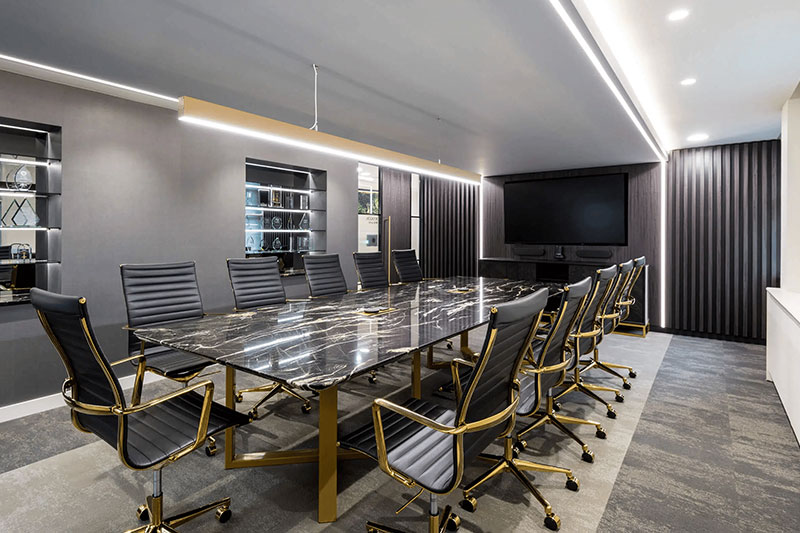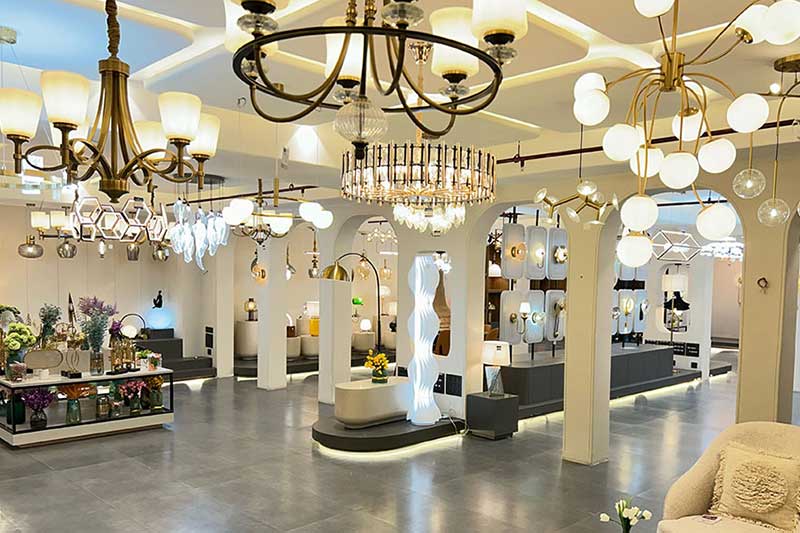The Strategic Role of Decorative Lighting in Commercial Spaces

Canada Light Expo | 12–13 November 2025 | International Centre, Toronto, Canada
Visual design contributes significantly to market perception, tenant retention, and overall property performance in commercial real estate development. Among various design elements, decorative lighting is critical in defining spatial quality and user experience. It serves both functional and strategic purposes, offering value beyond illumination.
As the sector evolves toward experience-focused and identity-driven spaces, lighting design is increasingly being integrated as a core consideration during the planning and construction phases. The emergence of advanced technologies and materials has further positioned decorative lighting as a reliable tool to support brand alignment, tenant satisfaction, and long-term asset performance.
Lighting as a Strategic Component in Development
Commercial properties are often evaluated for their location or structural design and ability to convey a specific environment or message. Lighting contributes to that objective by shaping perception, guiding navigation, and supporting visual clarity.
Well-executed lighting strategies can improve the functionality of shared areas, reinforce architectural features, and assist in defining zones within larger developments. In the context of competitive leasing markets, lighting also contributes to differentiation. Its presence in lobbies, corridors, building exteriors, and tenant-facing areas can influence decisions related to occupancy and lease agreements.
Brand Alignment and User Experience
In addition to functional objectives, decorative lighting supports alignment with brand identity. Properties designed for specific industries—such as technology, finance, or hospitality—often require environments that align with professional expectations and institutional values.
Lighting enables the developer or property manager to convey a consistent visual language when incorporated into the overall design framework. For instance, linear, minimal lighting schemes may communicate efficiency and innovation, while structured, warm-toned systems may suggest formality or tradition. In both cases, the lighting contributes to the broader narrative that the property presents to users and stakeholders.
Furthermore, user experience is increasingly recognised as a driver of asset performance. A coherent, professionally designed lighting plan can enhance spatial clarity, reduce eye fatigue in workspaces, and improve occupants’ overall comfort. These outcomes are relevant for tenant retention and compliance with emerging well-being and sustainability standards.
Financial Performance and Operational Considerations
Beyond the qualitative aspects, lighting has direct implications for operational efficiency and cost management. LED-based decorative lighting systems, now standard in most new developments, offer significant energy savings and low maintenance requirements compared to legacy systems such as halogen or fluorescent fixtures.
Integrating lighting control technologies—such as occupancy sensors, daylight dimming, and centralised automation—optimises energy use and aligns with environmental compliance targets. These efficiencies contribute to long-term operating cost reductions, which are factored into net operating income (NOI) projections and asset valuation.
Lighting also plays a role in market positioning. Properties with higher visual standards are typically marketed more effectively, experience shorter vacancy periods, and may achieve premium lease rates. In this context, investment in lighting is not classified solely as a design cost, but rather as an input into broader value creation.
Decorative Lighting at Canada Light Expo 2025
Canada Light Expo, scheduled for 12–13 November 2025 at the International Centre, Toronto, will provide industry stakeholders access to the latest technologies, case studies, and professional insight related to lighting systems for commercial real estate.
The event will cover areas including:
- Specification-grade decorative fixtures
- Integrated lighting control platforms
- Energy-efficient and code-compliant lighting solutions
- Applications in commercial, institutional, and mixed-use developments
Participants can evaluate solutions that align with project timelines, financial models, and sustainability benchmarks.
Conclusion: Practical Integration of Visual Design
Decorative lighting in commercial real estate is a functional requirement with measurable business outcomes. When planned and implemented strategically, it contributes to improved asset differentiation, higher user satisfaction, and operational efficiency.
As development priorities continue to evolve, lighting design must be considered not only as an architectural element but as part of the broader financial and strategic framework. The convergence of design, technology, and functionality ensures that decorative lighting will remain a critical component in the commercial built environment.
Stakeholders looking to integrate effective lighting systems into their upcoming projects are encouraged to attend Canada Light Expo 2025, where solutions supporting long-term asset performance will be presented and discussed.
More News
What’s Shaping Lighting Purchases: Buyer Behaviour & Market Insights
The lighting industry is entering a period of accelerated evolution driven by technology adoption, sustainability priorities, rising regulations, and increasing expectations for…View More
The Science of Light: How Human-Centric Lighting Boosts Productivity & Wellbeing
Lighting has always been a technical necessity, but today it is evolving into something far more powerful. Human-Centric Lighting (HCL) is shifting…View More
Beyond Illumination: Why Canadian Architects Now Design with Shadow
Canadian architecture is entering a new era where lighting is no longer defined by brightness alone. For decades, buildings were designed to…View More
How Do the Most Trusted Lighting Brands Stay at the Top
In a competitive and constantly evolving lighting market, staying top-of-mind isn’t just about creating beautiful products, it’s about creating consistent value. Lighting…View More
Sustainable Lighting Is the Future, But What Are the Real Challenges?
The world is switching to sustainable lighting—and fast. From smart city infrastructure and eco-conscious commercial buildings to energy-efficient residential solutions, the demand…View More
Download
Register Now
Show Countdown
International Centre, Toronto, Canada
- days
- Hours
- Minutes
- Seconds





